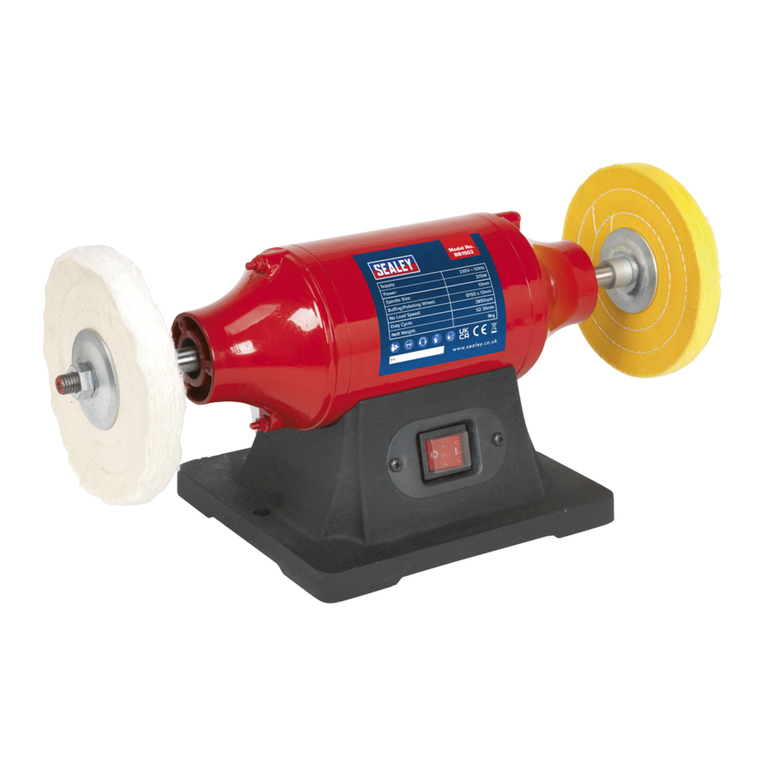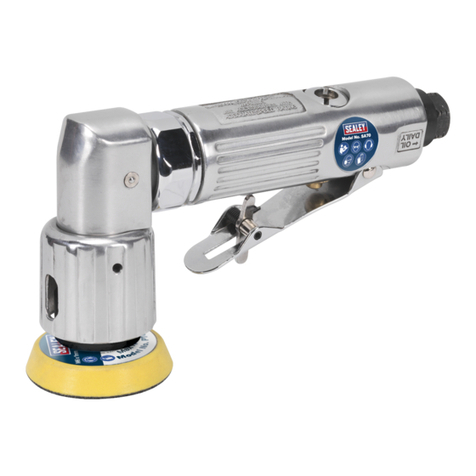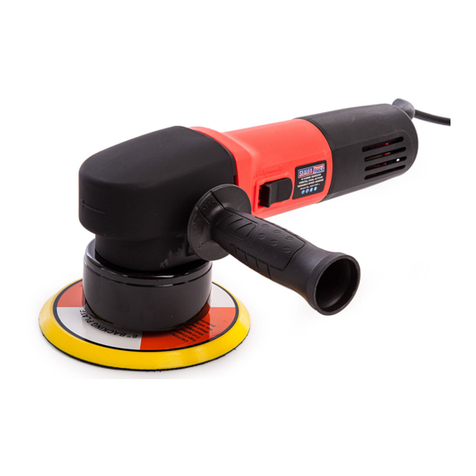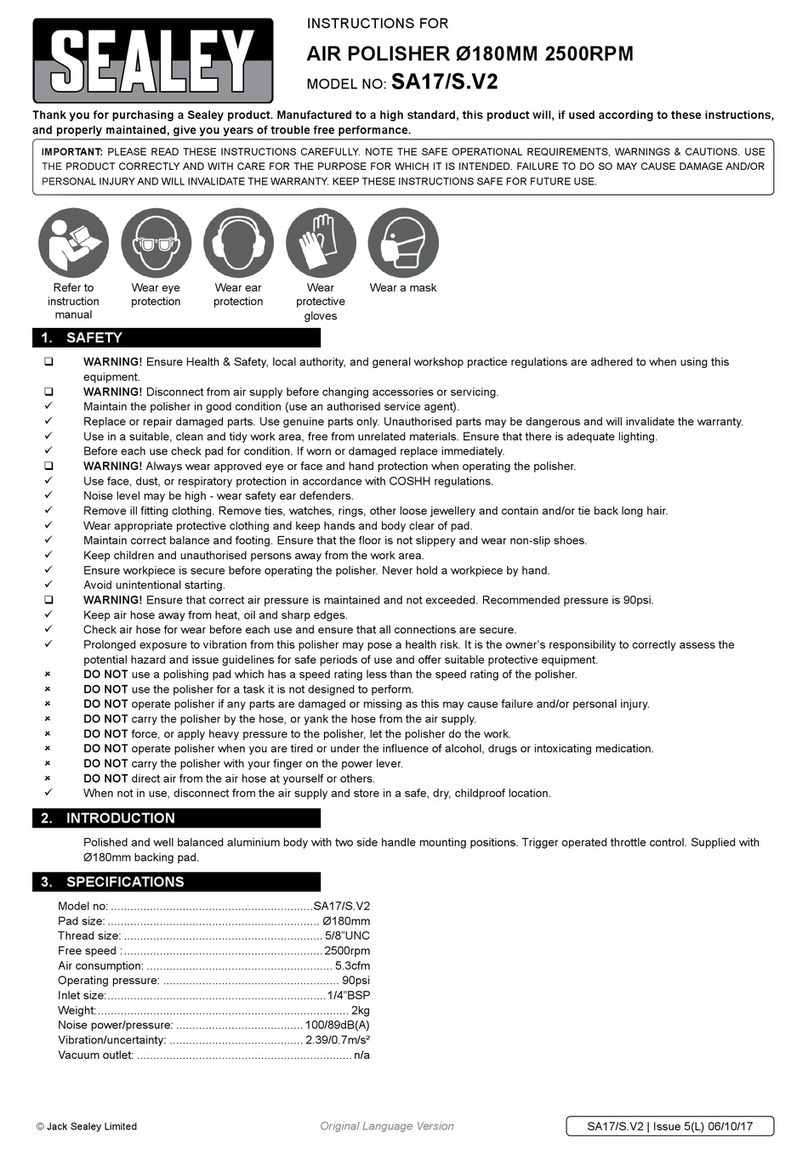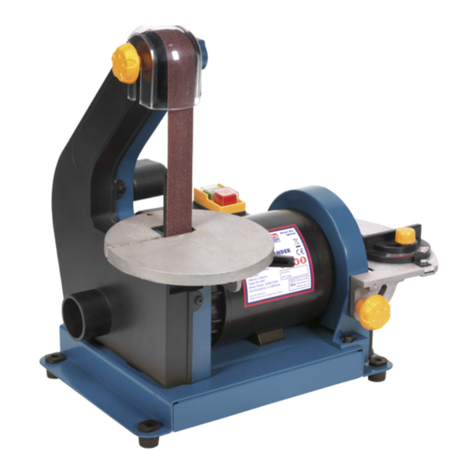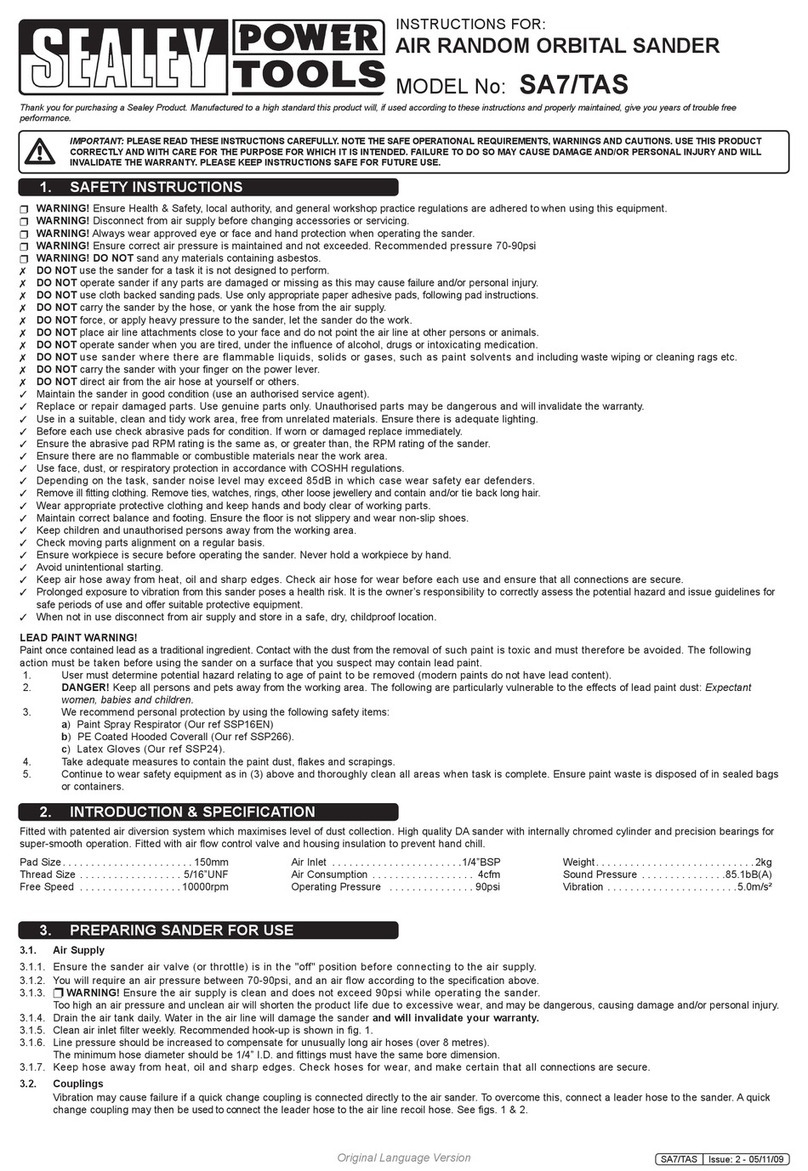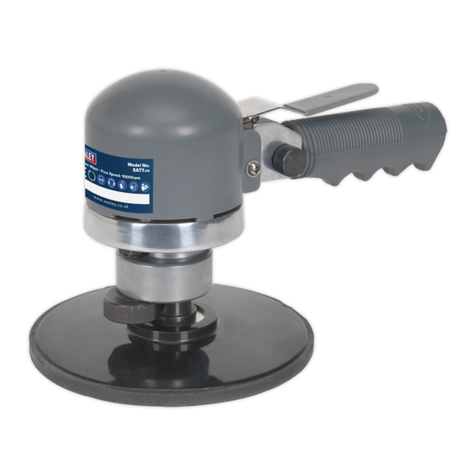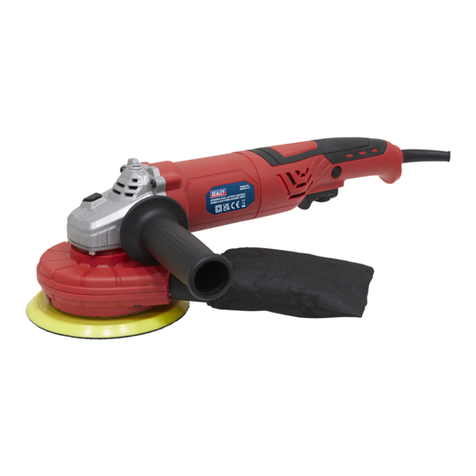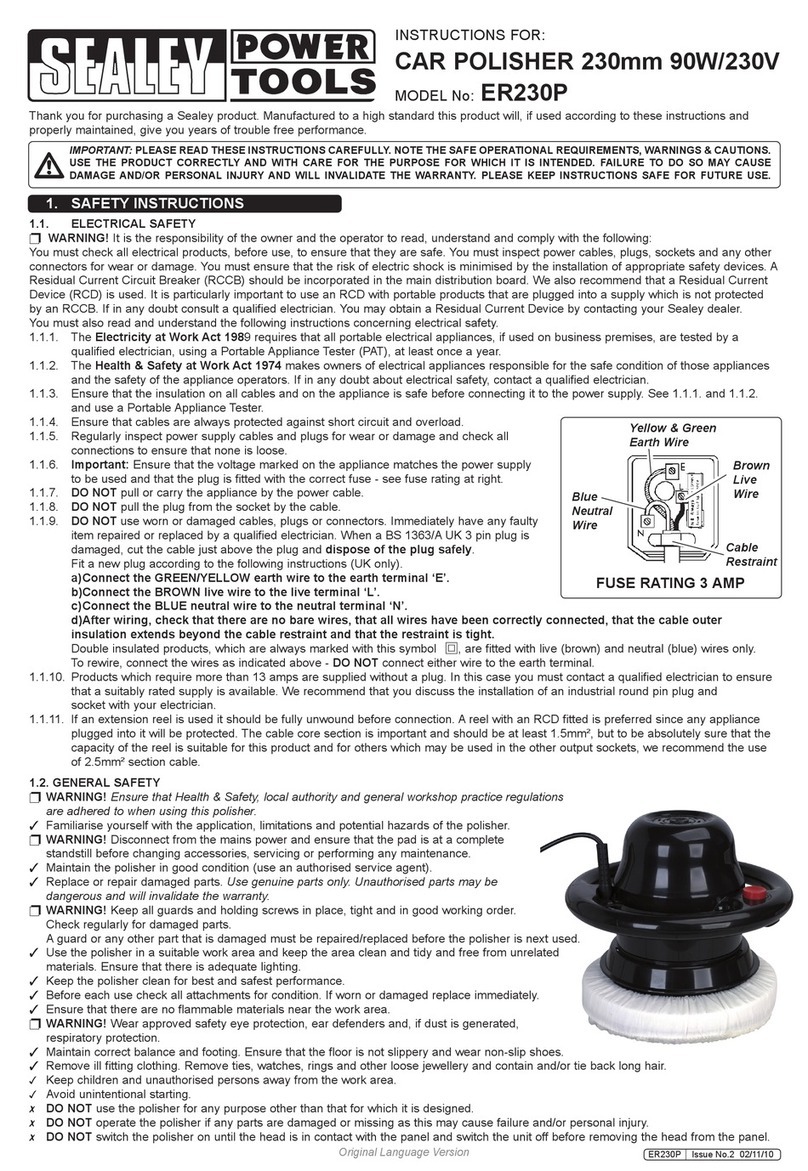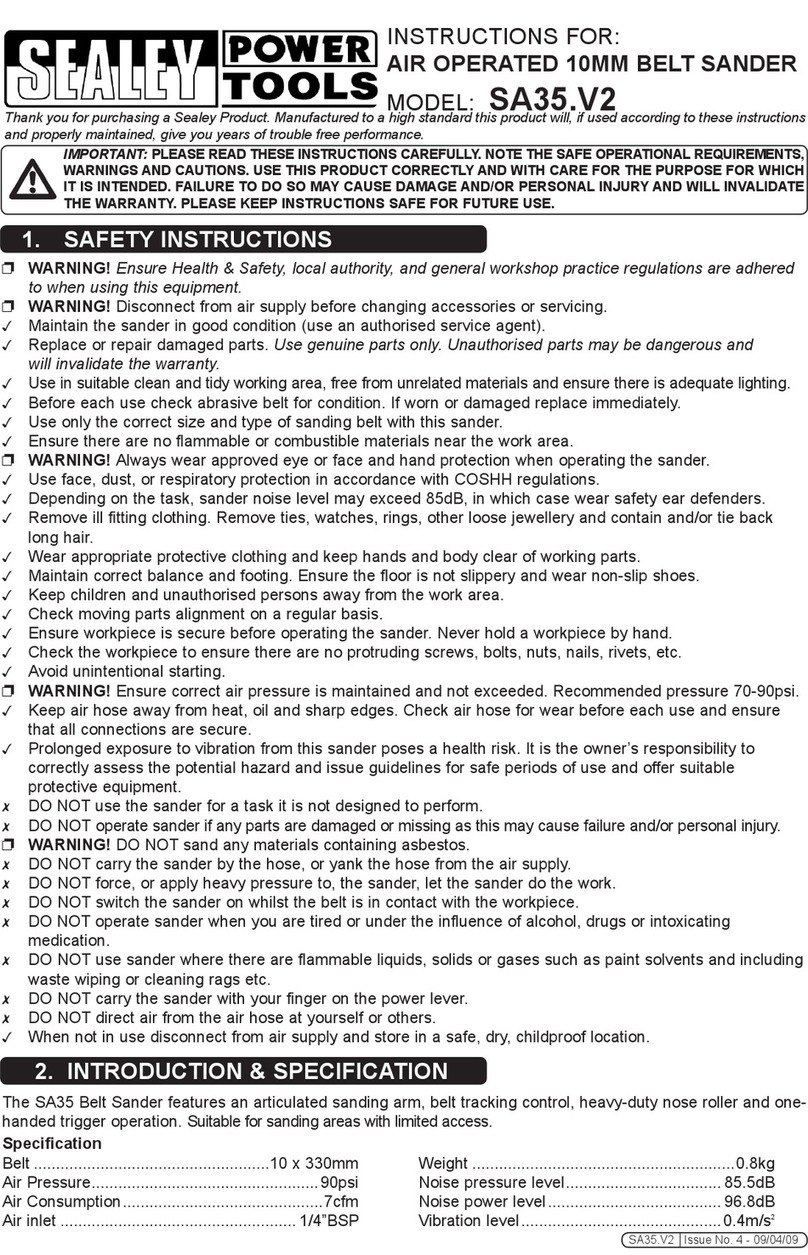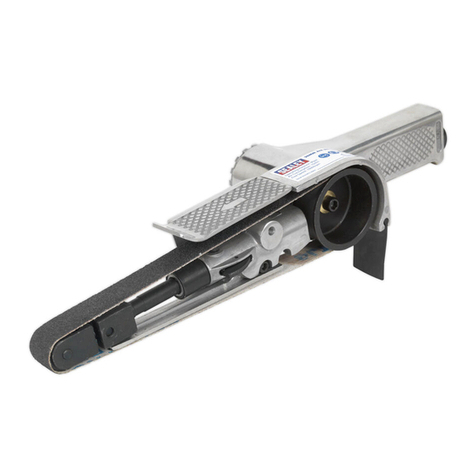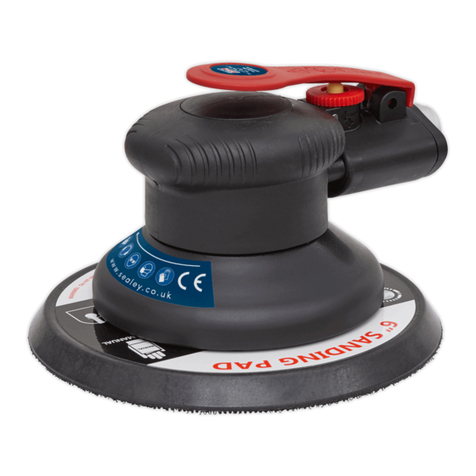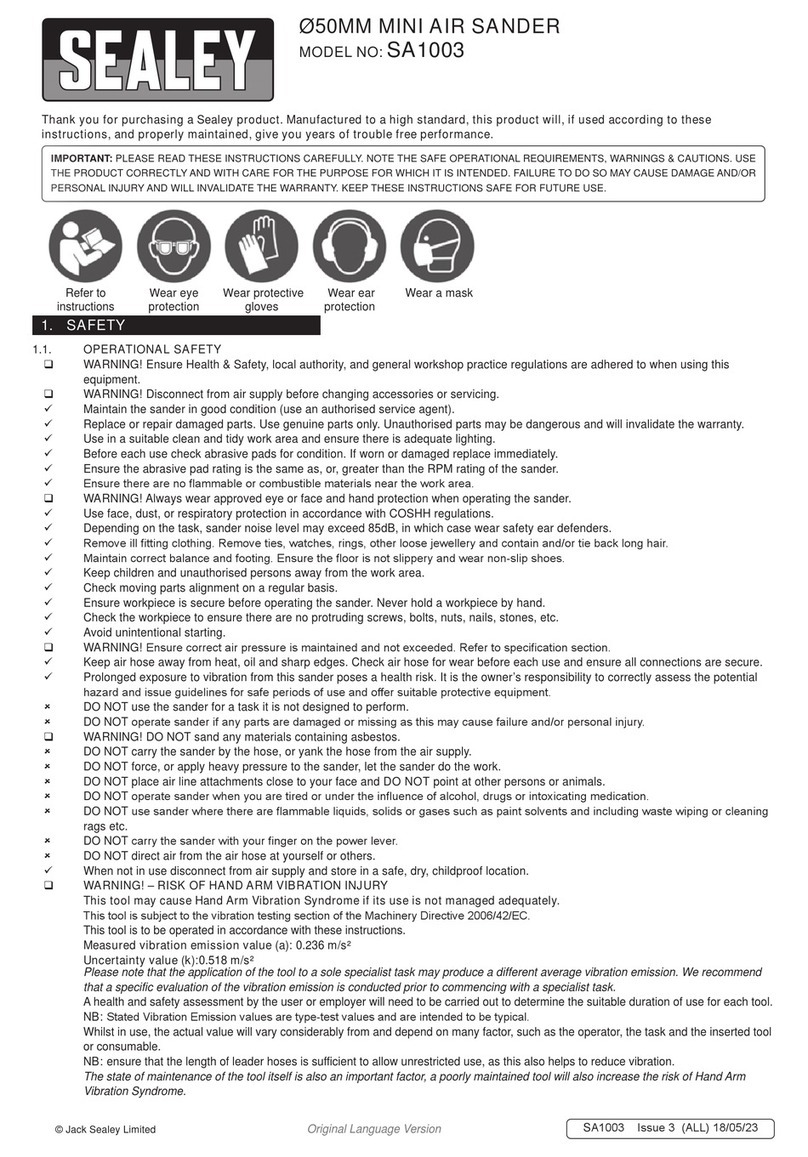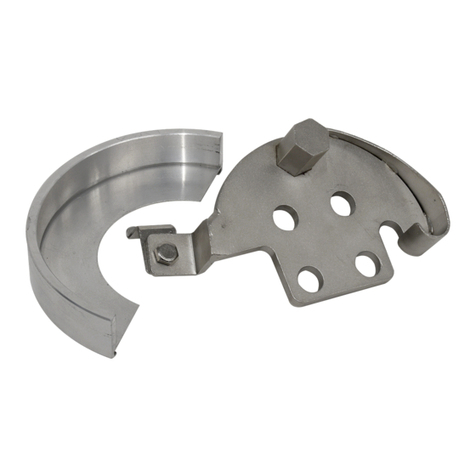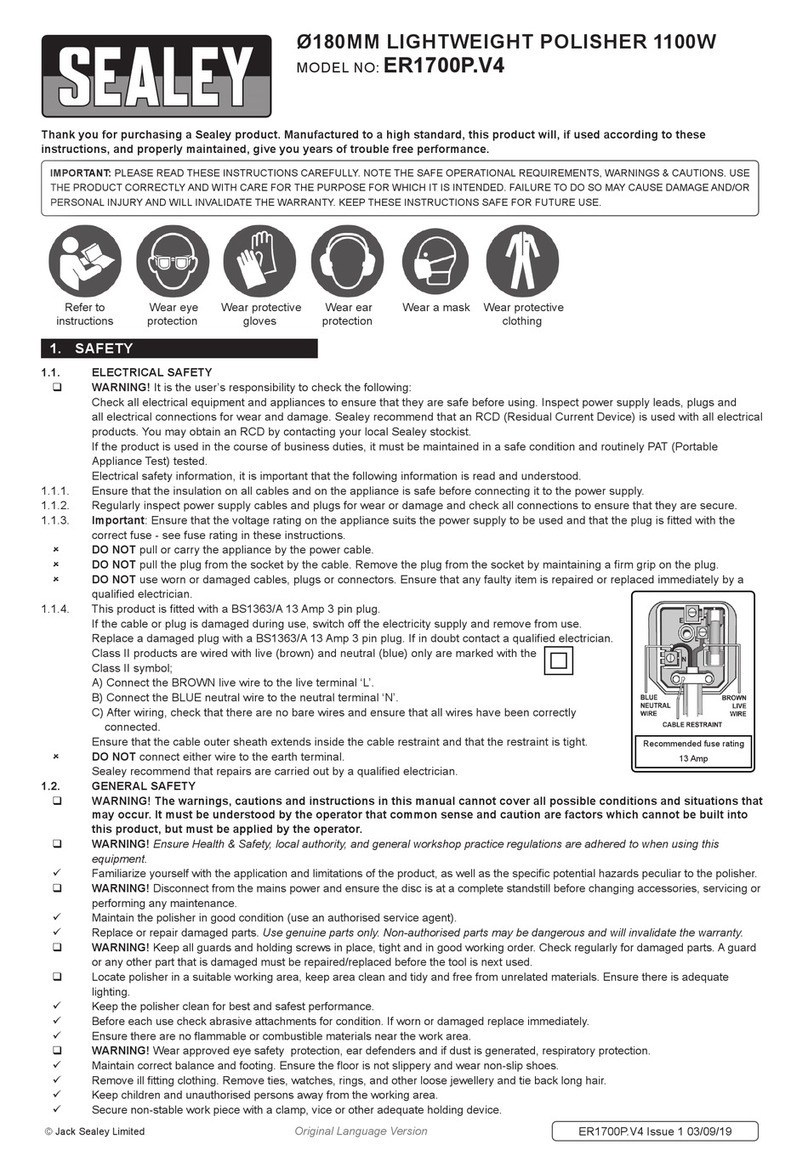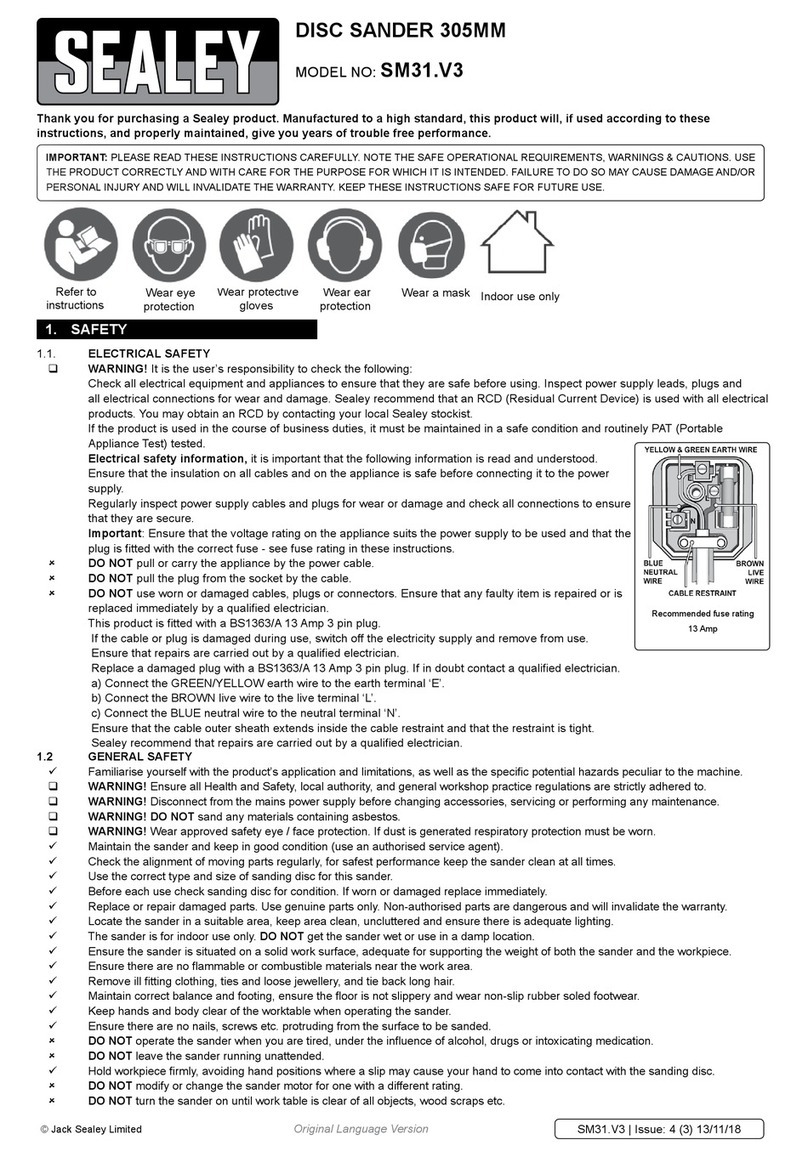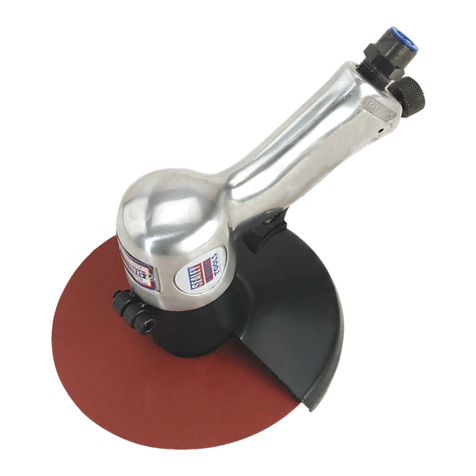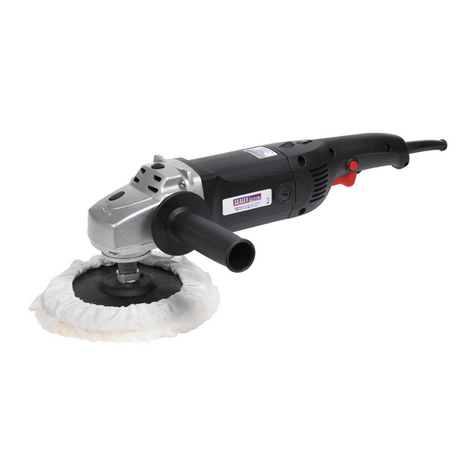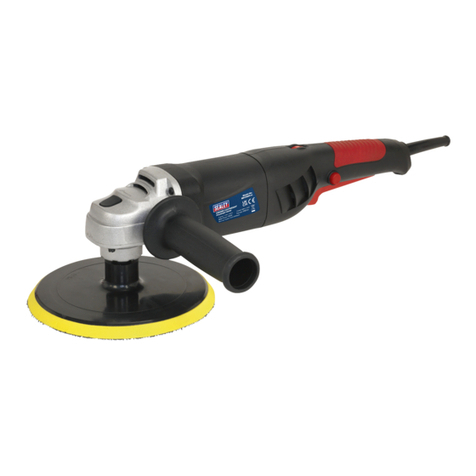
1.1 ELECTRICAL SAFETY
WARNING! It is the responsibility of the owner and the operator to read, understand and comply with the
following:You must check all electrical products, before use, to ensure that they are safe. You must inspect
power cables, plugs, sockets and any other connectors for wear or damage. You must ensure that the risk of
electric shock is minimised by the installation of appropriate safety devices. A Residual Current Circuit Breaker
(RCCB) should be incorporated in the main distribution board. We also recommend that a Residual Current
Device (RCD) is used. It is particularly important to use an RCD with portable products that are plugged into a
supply which is not protected by an RCCB. If in any doubt consult a qualified electrician. You may obtain a
Residual Current Device by contacting your Sealey dealer.
You must also read and understand the following instructions concerning electrical safety.
1.1.1 The Electricity at Work Act 1989 requires that all portable electrical appliances, if used on business
premises, are tested by a qualified electrician, using a Portable Appliance Tester (PAT), at least once a
year.
1.1.2 The Health & Safety at Work Act 1974 makes owners of electrical appliances responsible for the safe
condition of those appliances and the safety of the appliance operators. If in any doubt about
electrical safety, contact a qualified electrician.
1.1.3 Ensure that the insulation on all cables and on the appliance is safe before connecting it to the power
supply. See 1.1.1 and 1.1.2 and use a Portable Appliance Tester (PAT).
1.1.4 Ensure that cables are always protected against short circuit and overload.
1.1.5 Regularly inspect power supply cables and plugs for wear or
damage and check all connections to ensure that none are loose.
1.1.6 Important: Ensure that the voltage marked on the appliance matches
the power supply to be used and that the plug is fitted with the
Correct fuse - see fuse rating at right.
1.1.7 DO NOT pull or carry the appliance by the power cable.
1.1.8 DO NOT pull the plug from the socket by the cable.
1.1.9 DO NOT use worn or damaged cables, plugs or connectors.
Immediately have any faulty item repaired or replaced by a qualified
electrician. When a BS 1363/A UK 3 pin plug is damaged, cut the
cable just above the plug and dispose of the plug safely.
Fit a new plug according to the following instructions (UK only).
a) Connect the GREEN/YELLOW earth wire to the earth terminal ‘E’.
b) Connect the BROWN live wire to the live terminal ‘L’.
c) Connect the BLUE neutral wire to the neutral terminal ‘N’.
d) After wiring, check that there are no bare wires, that all wires have been correctly
connected, that the cable outer insulation extends beyond the cable restraint and that the restraint is
tight. Double insulated products, which are always marked with this symbol , are fitted with live
(brown) and neutral (blue) wires only. To rewire, connect the wires as indicated above - DO NOT connect
either wire to the earth terminal.
1.1.10 Products which require more than 5 amps are supplied without a plug. In this case you must contact a
qualified electrician to ensure that a suitably rated supply is available. We recommend that you discuss
the installation of an industrial round pin plug and socket with your electrician.
Thank you for purchasing a Sealey Product. Manufactured to a high standard this product will, if used according to these instructions
and properly maintained, give you years of trouble free performance.
IMPORTANT: PLEASE READ THESE INSTRUCTIONS CAREFULLY. NOTE THE SAFE OPERATIONAL
REQUIREMENTS, WARNINGS AND CAUTIONS. USE THIS PRODUCT CORRECTLY AND WITH CARE FOR THE
PURPOSE FOR WHICH IT IS INTENDED. FAILURE TO DO SO MAY CAUSE DAMAGE AND/OR PERSONAL
INJURY AND WILL INVALIDATE THE WARRANTY. PLEASE KEEP INSTRUCTIONS SAFE FOR FUTURE USE.
1. SAFETY INSTRUCTIONS
INSTRUCTIONS FOR
VARIABLE SPEED BELT SANDER
400W/230V
MODEL: SBS35
SBS35 Issue No: 1 - 21/04/08
FUSE RATING 5 AMP
Yellow & Green
Earth Wire
Brown
Live
Wire
Cable
Restraint
Blue
Neutral
Wire
